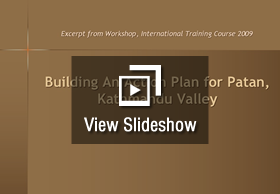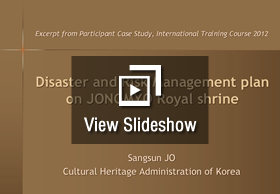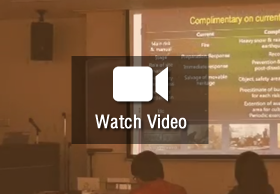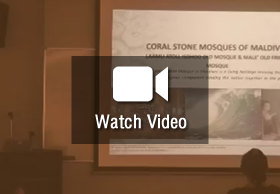

The final stage enables participants to better understand the significance of having an implementation strategy for their disaster risk management plans and various aspects of implementation, including financing, judicious use of time and resources as well as the need for constantly updating and reviewing the plan. At this stage participants may be evaluated for their progress, based on the disaster risk management plan they may have prepared or alternatively through a formal interaction.
Lectures comprised of secondary examples of previously existing and implemented disaster risk management plans for heritage sites that highlight the stages in implementation and the various strategies involved and reasons for their successful or unsuccessful implementation.
These may be based on the final set of lectures in this module. Participants could use this opportunity to evaluate their own plans and strategies through group discussions and interactions with the various instructors.
A workshop may be organised to prepare an action plan for implementation of disaster risk management strategies prepared by the participants for primary case study or participants' case study sites. These workshops may also be combined with different modules depending on the length and focus of the course.
Sample checklists and worksheets could also be circulated among participants at this stage to help in developing the action plan for implementation and review.
Site: Patan, Kathmandu
Workshop: Building an Action Plan International Training Course, 2009
Instructors: Kai Weise, Rohit Jigyasu
Duration: 270 minutes
Read More...

Excerpt from Participant Case Study, International Training Course 2012
Disaster and Risk Management plan on JONGMYO Royal shrine
Participant: Sangsun JO Cultural Heritage Administration of Korea
Read More...


Excerpt from Participant Case Study, International Training Course, 2013
Coral Stone Mosques of the Maldives
Participant: Zaha Ahmed


Site: Patan, Kathmandu
Workshop: Building an Action Plan International Training Course, 2009
Instructors: Kai Weise, Rohit Jigyasu | Duration: 270 minutes
This workshop was organised to introduce the participants to the process for building an action plan to address the issues pertaining to disaster risk management by applying this to the case study area.
The participants were divided into four groups. Each group prepared an action plan based on their findings during the previous two exercises centred around building and area level plans which included the following:
Each group presented their findings and discussed them in an open forum.

MEDIUM TERM |
|
Fire prevention |
Kathmandu |
LONG TERM |
|
Public safety |
- Concerned |
An implementation diagram for Jongmyo Royal Shrine, Korea was prepared by the participant of the 2012 International Training Course- Sangsun Jo. The shrine is a UNESCO World Heritage Site dating back to the 13th century and is most vulnerable to fires and earthquakes. Given the multiple stakeholders involved in the management of the site, various roles for implementation of the disaster risk management plan were delineated by the participant and assigned to different parties.